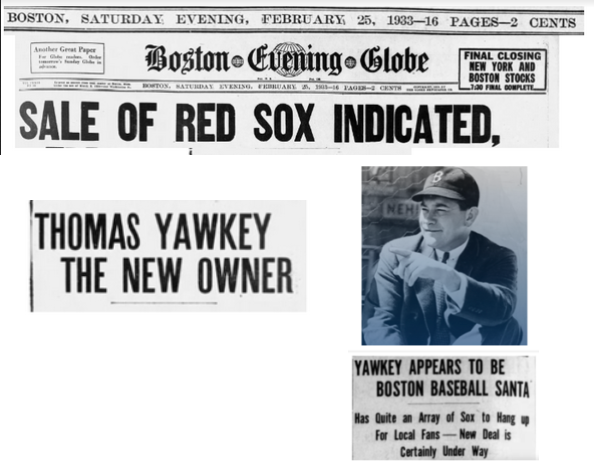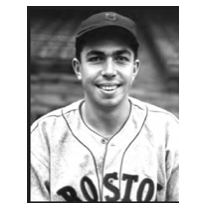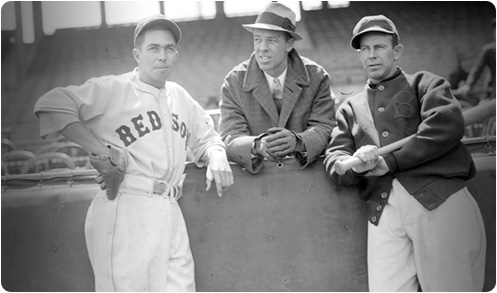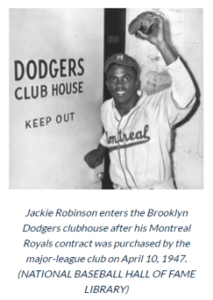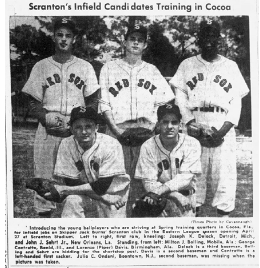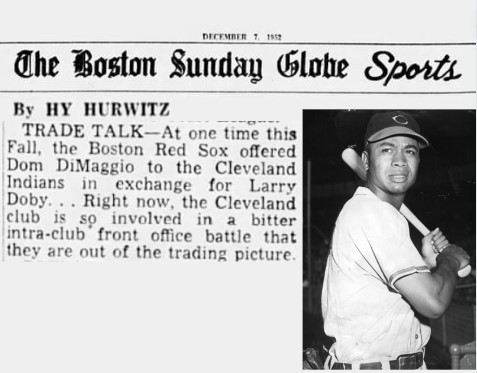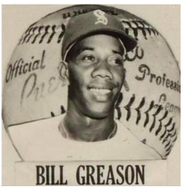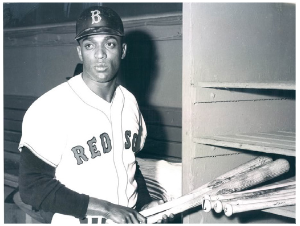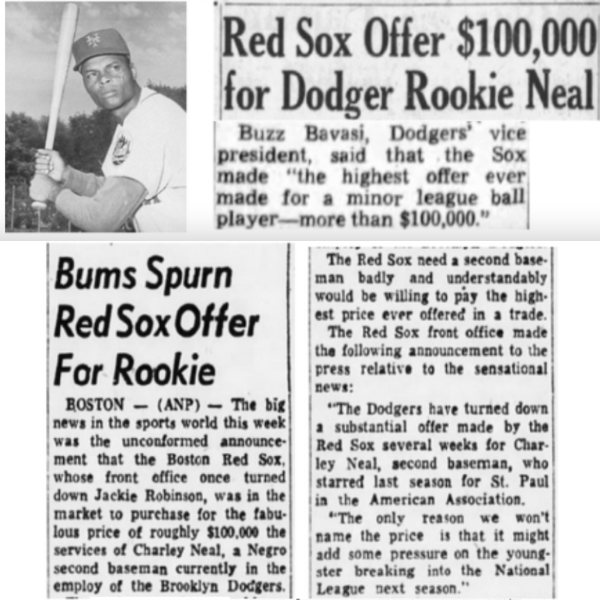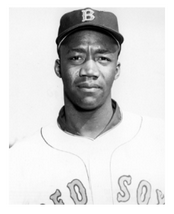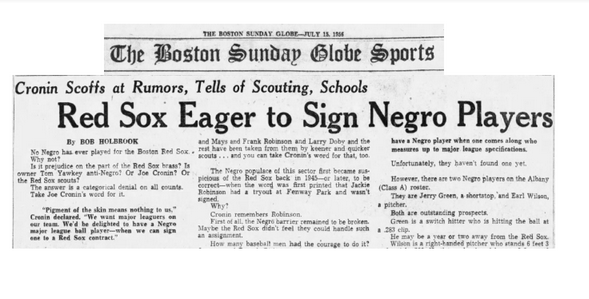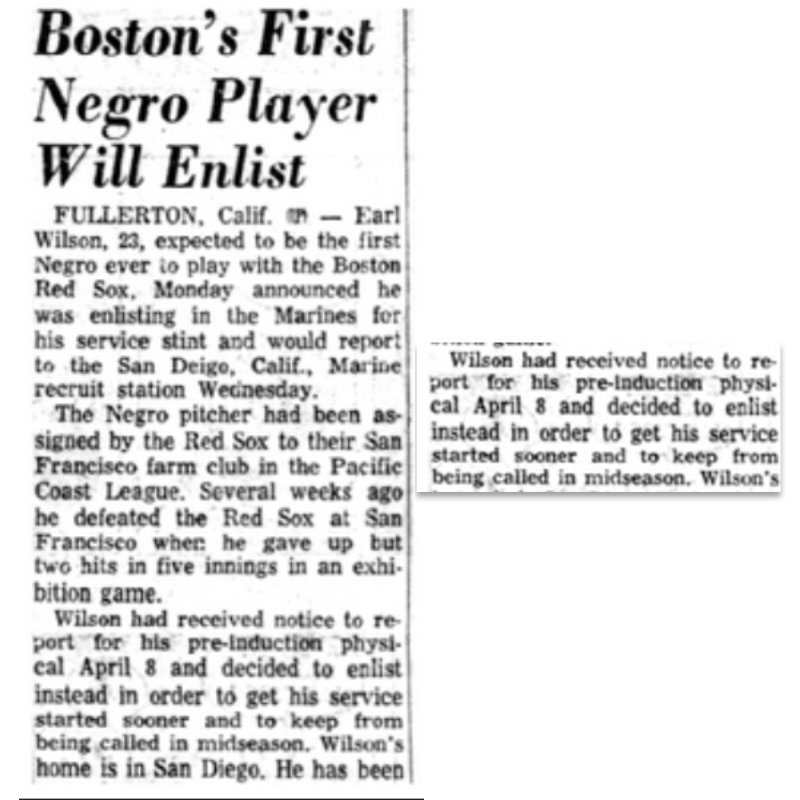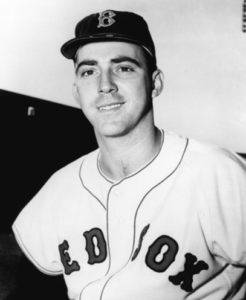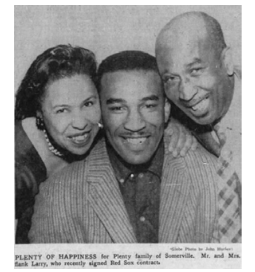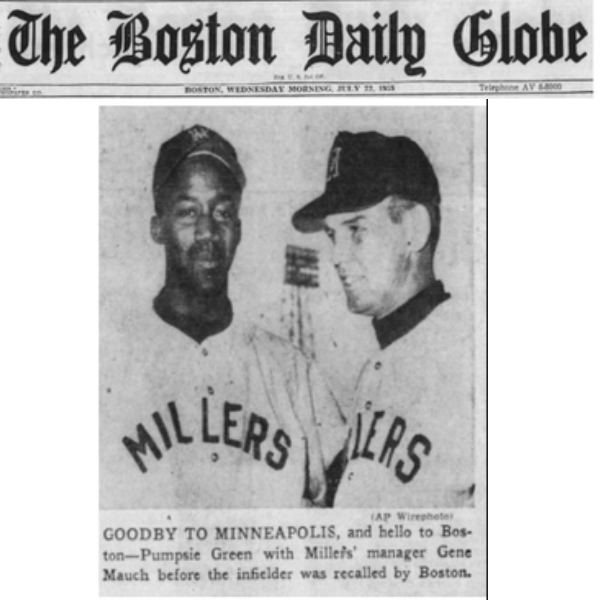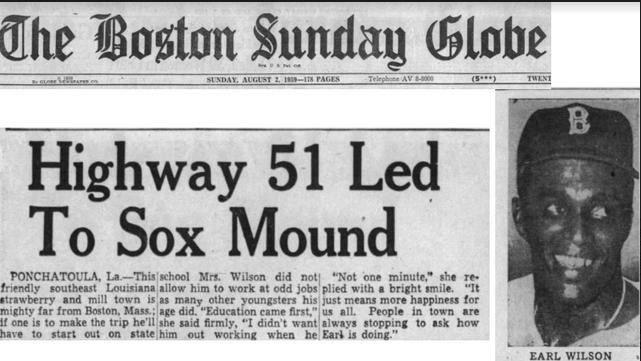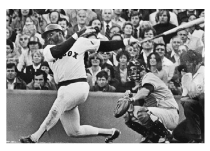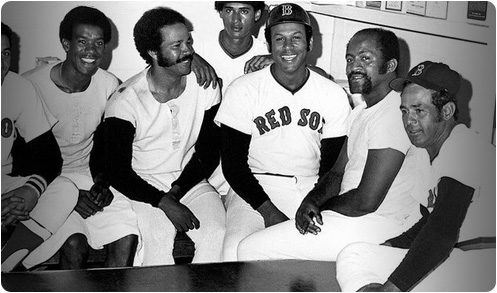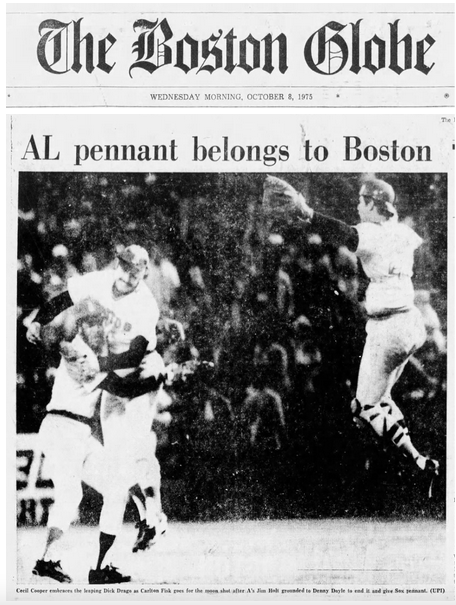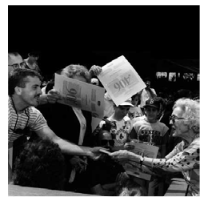It’s impossible to talk honestly about the issue of integration in America and the Boston Red Sox without first acknowledging the brutal, painful, and shameful legacy of American slavery and segregation. To this very day, we live with a host of inequities and injustices that arose from systems that turned people into property and, even after emancipation, denied those same people jobs, opportunities, and basic rights simply on the basis of the color of their skin. Thankfully, African-Americans, other people of color, and their friends refused to accept that inferior position and through lawsuits, peaceful protest, and constant advocacy pushed the nation to live up to its own ideals of “liberty and justice for all.”
As the nation was evolving in the mid-1900s, so too was Major League Baseball, including the Red Sox. Contrary to popular belief, the Red Sox were not resistant to integration. In fact, under the leadership of Tom Yawkey, the Red Sox successfully recruited Black players to their minor league teams. Yawkey also made numerous sincere and credible offers to recruit talented and established Black players to Boston’s major league roster a full decade before integrating the major league team with the addition of Elijah “Pumpsie” Green in 1959.
We acknowledge that these facts don’t change the regrettable and painful reality that the Red Sox were last to integrate in Major League Baseball. Ugly things happened in Boston and the consequences were painful, demeaning, and wrong. It was painful for players who had to work under those conditions and for fans of color who wanted to embrace their home team, but felt that their home team didn’t embrace them.
Mindful of all that, we invite you to learn more about the true story of Tom Yawkey – a man “who changed and grew,” as the great pitcher Jim Lonborg so eloquently put it – who bought a moribund team, revived it, integrated it and, particularly in the last three decades of his life, worked hard to recruit talent regardless of race. And we invite you to learn how the legacy of Tom and Jean Yawkey, whose generous and often anonymous philanthropy extended to people of all races, continues to this day through the Yawkey Foundation.
Download the Full Integration Timeline as a PDF
Download Timeline
Timeline
Major League Baseball (MLB) is established.
Tom Yawkey Purchases the Boston Red Sox
Tom Yawkey, at 30 years old, purchases the Boston Red Sox, earning him the endearing nickname of “Baseball Santa” for his investment in the team and Fenway Park.
The Boston Red Sox sign Mel Almada
The team signs Latino Mel Almada, the first Mexican-born player in MLB history. Almada plays four years with the Red Sox and is inducted into the Mexican Baseball Hall of Fame in 1973.
1937
Mel Almada, the first Mexican-born player in Major League Baseball, pictured with fellow Red Sox Billy Werber and Rick Ferrell. Almada was on the team from 1933 to 1937.
1945
The Red Sox hold a tryout for future Hall of Famer Jackie Robinson along with Samuel Jethroe and Marvin Williams. Although Tom Yawkey was not in Boston at the time of the tryout, a false narrative emerges years later about Yawkey and that tryout which casts an unsubstantiated and pejorative pall over Tom’s character and values pertaining to racial matters. In October, less than two months after the end of World War II, the Brooklyn Dodgers sign Jackie Robinson to a minor league deal to play for their triple-A international team in more racially tolerant Montréal, Canada.
1947
The Brooklyn Dodgers are the first MLB team to integrate with the signing of Jackie Robinson to its major league roster. A few months later, the Cleveland Indians integrate with the signing of Larry Doby.
An Executive Order is signed to end segregation in the Armed Services.
Red Sox Highlight Commitment to Inclusion
The Red Sox proudly display a billboard emphasizing the Yawkey- owned team’s commitment to inclusion. Prominently placed for all the team’s fans, players, employees and visitors to see upon entering Fenway Park, the billboard’s installation is celebrated by the team’s senior executives and prominent players in MLB. Red Sox’ senior executives and MLB players proudly showcase a new billboard at Fenway Park in 1950. Pictured R-L: Red Sox General Manager (1947-59) Joe Cronin; Red Sox player Bobby Doerr; Cleveland players Larry Doby, Bobby Avila, and Lou Boudreau; and Ben Shapiro of the Massachusetts Committee of Catholics, Protestants and Jews.
Piper Davis Joins Red Sox Farm Team
With the Red Sox having signed 33-year-old talented and established Black infielder, Lorenzo “Piper” Davis, to a minor league contract, Davis is the first Black player to join the Red Sox organization. According to the African American Registry, his signing “ends an era of racial exclusion” by the Red Sox. Davis was a player/manager for future Hall of Famer Willie Mays’ team at the time. Mays signs with the New York Giants that same year. The Red Sox also attempt to acquire Black future Hall of Famer Larry Doby from Cleveland. Butler, Joe M. “Sockers Awaiting Visit By Cronin on Saturday.” (Scranton Times-Tribune, 30 Mar. 1950, p. 31.)
The Red Sox Make Second Attempt to Acquire Center Fielder Larry Doby
The Red Sox make a second attempt to acquire Black center fielder Larry Doby with a substantial offer, but Cleveland’s general manager refuses to trade the future Hall of Famer. Offers at that time were made to teams, not players, and Tom Yawkey was known for making strong offers for established players, irrespective of race. To obtain Doby, the Red Sox even offer to trade All-Star player Dom DiMaggio, fan favorite and future Boston Red Sox Hall of Famer, whose salary was more than three times that of the average baseball player in the 1950s. Cleveland declines the trade because Doby is deemed too valuable to their team.
Red Sox Bid to Acquire Bill Greason
The Red Sox enter into a bidding war to acquire Double-A pitcher Bill Greason from the Texas League, offering over three times the average baseball salary at the time. Greason would go on to play for the St. Louis Cardinals as their second-ever Black player. The Red Sox offer is declined because the team’s owner decides to retain Greason for another season.(https://sabr.org/bioproj/person/bill-greason)
The Red Sox Sign Pitcher Earl Wilson
The Red Sox sign Black pitcher Earl Wilson to a minor league contract. Hurwitz, Hy. “Braves’ Trade Talks with Dodgers Ebb.” (Boston Globe, 7 Dec. 1952, p.48.)
The Supreme Court rules in Brown v. Board of Education that segregation in schools is unconstitutional.
Red Sox Make Offer to Acquire Dodger’s Second Baseman and Future All-Star Charlie Neal
The Red Sox make an offer to acquire Dodgers’ Black second baseman and future All-Star Charlie Neal. The offer was comparable to the salary of Ted Williams, the highest paid professional baseball player at the time. However, the offer is declined with the Dodgers’ vice president stating that Neal figures into their plans for the upcoming season. That same year, the Red Sox make a substantial offer to acquire Black outfielder and future All-Star Al Smith from Cleveland, but the offer is rejected. Hurwitz, Hy. “Red Sox Offer $100,000 for Dodger Rookie Neal.” (Boston Globe, 7 Dec. 1954, p. 56.)
Red Sox Sign Infielder Elijah “Pumpsie” Green
The Red Sox sign Black infielder Elijah “Pumpsie” Green from the Oakland Oaks to the team’s minor league system. By the end of the 1955 season, 13 of the 16 MLB teams have Black players on their major league rosters.
Rosa Parks sparks the Montgomery bus boycott.
Red Sox Confirm Commitment to Build Top-Talent Roster
Holbrook, Bob. “Red Sox Eager to Sign Negro Players.” (Boston Globe, 15 Jul. 1956, p. 58.)
The Civil Rights Act of 1957 is signed to protect voter rights.
Earl Wilson Promoted and Enlists in Marines Shortly After
At spring training, the Red Sox determine Earl Wilson is ready to be promoted to the majors after pitching a 5-2 victory in a game against the team’s major league squad. However, he then receives his military draft notice and enlists in the U.S. Marines for two years. “Boston’s First Negro Player Will Enlist.” (Great Falls Tribune, 2 Apr. 1957, p. 11.)
Red Sox Sign Mike Fornieles
The Red Sox sign Latino Mike Fornieles to their major league roster. Fornieles was a Cuban-born, All-Star pitcher who went on to play six years with the team.
Red Sox Sign Lawrence Plenty
The Red Sox sign Black Bostonian Lawrence Plenty to its Waterloo, Iowa minor league team. Shechman, Bill. “Plenty’s Parents Rabid Red Sox Fans.” (Boston Globe, 28 June 1958.)
Elijah “Pumpsie” Green Promoted to Red Sox Major League Roster
The Red Sox integrate its major league roster with the promotion of Elijah “Pumpsie” Green. (The Boston Globe, 22 Jul. 1959, p. 25)
Earl Wilson Promoted to Red Sox Major League Roster
Earl Wilson is also promoted to the major league roster weeks later after completing his military service. (The Boston Globe, 2 Aug. 1959, p. 60)
The Greensboro Sit-In, a non-violent protest of segregation, inspires similar sit-ins in other states.
Freedom Riders challenge Jim Crow laws in the South.
Martin Luther King Jr. gives his “I Have a Dream” speech.
1964
The Civil Rights Act of 1964 is signed to prevent employment and education discrimination and outlaw racial segregation in all public places and most private businesses.
Martin Luther King Jr. leads the first civil rights march in Boston. More than 20,000 people marched from Nubian Square in Roxbury to Boston Common.
1967
Tom Yawkey continues to assemble one of the best and most diverse teams in all of MLB, the “Impossible Dream Team,” and wins the American League Championship. Some of the players of color include Joe Foy, Elston Howard, Jose Santiago, George Scott, Reggie Smith, Jose Tartabull, and John Wyatt.
The Civil Rights Act of 1968 is signed to provide equal housing opportunity.
1968-1974
Throughout the late ‘60s and early ‘70s, Tom Yawkey and the Red Sox add more notable talent such as Puerto Rican infielder Luis Alvarado, Black outfielder Floyd Robinson, and Puerto Rican pitcher Juan Pizarro in 1968; Puerto Rican catcher Joe Azcue and Mexican pitcher Vicente Romo in 1969; Puerto Rican pitcher Roger Moret in 1970; Black first baseman Cecil Cooper, Venezuelan shortstop Luis Aparicio, Cuban pitcher Luis Tiant, Puerto Rican outfielder Juan Beníquez, and Panamanian left fielder Ben Oglivie in 1971; Black outfielder/third baseman Tommy Harper, Black pitcher Lynn McGlothen, and Black pitcher Bob Veale in 1972; Puerto Rican first baseman Orlando Cepeda and Dominican shortstop Mario Guerrero in 1973; Black left fielder/ designated hitter Jim Rice, Cuban pitcher Diego Seguí, and Dominican pitcher Juan Marichal in 1974.
1975
The culmination of the Red Sox’s acquisition of top talent results in the team winning the American League Championship and then playing in what is considered one of the best World Series of all time, ultimately losing in the final game against the Cincinnati Reds 4-3. Notable players of color on the team include Cecil Cooper, Roger Moret, Jim Rice, and Luis Tiant.
Tom Yawkey passes away
Tom Yawkey passes away and his will establishes the Yawkey Foundation to support the places and causes that were important to him during his lifetime.
Jean Yawkey Establishes Baseball Scholarship at Boston College
Tom’s wife, Jean Yawkey, establishes the Thomas A. Yawkey Scholarship Fund at Boston College to provide scholarships for AHANA student-athlete baseball players from the Greater Boston area.
Red Sox play in the World Series
The Red Sox play in the World Series under the ownership of Jean Yawkey, who was one of the first women owners of an MLB team.
1988
Jean Yawkey underwrites the Boston exhibit of the Jackie Robinson Foundation national tour, spreading awareness of Jackie Robinson’s life and legacy among thousands of exhibition visitors. That same year, Jean has an inspiring conversation with Rachael Robinson, Jackie Robinson’s widow, after which Jean establishes the Yawkey Scholarship with the Jackie Robinson Foundation to provide comprehensive, four-year support to students through tuition support, career guidance, internship and permanent job placement, travel abroad, and leadership and practical life skills training. That partnership and commitment to supporting Jackie Robinson Scholars, established between Jean and Rachel decades ago, continues to this day.
Jean Yawkey passes away
Jean Yawkey passes away. Yawkey majority ownership of the Red Sox continues in the form of a trust.
2002 to Present Day
After more than 70 years of Yawkey ownership, the Red Sox are sold for over $700 million, which at the time is the highest price ever paid for a major league team. The Yawkey interest, as the majority shareholder, is sold for more than $400 million. As Tom and Jean Yawkey intended, their proceeds from this sale go directly to the Yawkey Foundation in order to continue its legacy of making significant and positive impacts on the quality of life for children, families, and the underserved in the areas that the Yawkeys called home: Boston, Massachusetts and Georgetown County, South Carolina.
To learn more about how Yawkey Foundation is perpetuating the charitable legacy of Jean and Tom Yawkey, please visit the Yawkey Foundation website.
